Start 14-Day Trial Subscription
*No credit card required

Where on Earth is the Best Water for Brewing?
Hops and yeast are the two ingredients that often get the most attention in craft beer culture today, but water can also impact a beer’s flavor, appearance, aroma and mouthfeel. After all, it makes up about 90 percent of beer! So where on Earth is the best water for brewing? That’s a good question for a beer connoisseur to ask, but turns out it’s the wrong one.
Historically, water profiles in eight European cities were key to the rise of dramatically different beer styles because certain elements in those cities’ water supplies interacted with the other ingredients in beer (malt, hops and yeast) in specific ways. While most brewers now treat their water – and any style can be brewed anywhere – different types of water are ideal for particular styles. This article will focus on the effect that water has on brewing as well as where to find the best water for brewing different styles around the world.
A Deep Dive
Before we take off on a world tour, we’ll take a look at the properties of water that are important for brewers to understand.
In his book “New Brewing Lager Beer,” the late Gregory J. Noonan, owner and brewmaster of Vermont Pub and Brewery, emphasized that the acidity level is key to a successful brewing cycle. A quick pH test of the mash tells the brewer how acidic it is. The pH scale goes from 1 (most acidic) to 14 (most basic), and 7 is considered neutral. Keeping the right pH matters because the enzymes that convert malt starches into sugars work best within a relatively narrow range on the pH scale – about 5.2 to 5.5.

This USGS map shows water hardness across the United States, with the hardest water found in the Mountain West and Midwest.
Minerals in the water affect pH, and their presence largely depends on the geology of a region. For example, in areas with limestone, it is more likely to pick up alkaline substances that neutralize acids. Higher alkaline water is “hard” water, with a pH of 8.5 or higher. Fewer minerals are picked up in places with more volcanic rock, so the water is more acidic or “soft,” with a pH under 6.5. Other factors can come into play, like heavy rain or snowmelt, making consistency difficult to achieve when using only “natural” sources (even when filtered through a municipal supply).
Brewers need to know what kind of water they are dealing with, but for most, precise calculations matter less than general principles. Water purity matters first and foremost – brewing water should be free of pollutants, such as bacteria. The mineral composition is a secondary concern, according to Noonan, because it can be adjusted.
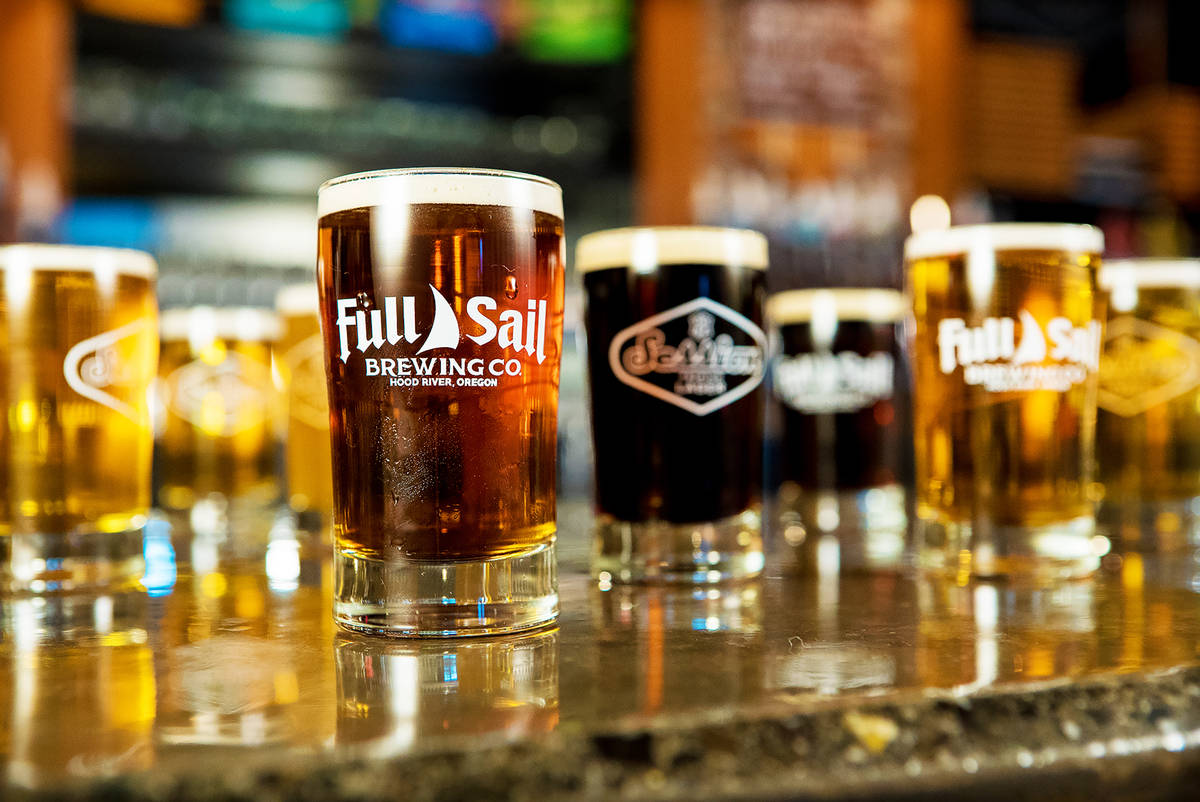
Based on the desired color of the beer style they are brewing, brewers can calculate how much grain (which provides acids) is needed to offset the residual alkalinity of their water.
Photo courtesy Full Sail Brewing
Starting with the desired color of a beer, brewers calculate how much grain is needed to offset the alkalinity. They then can determine what, if any, adjustments need to be made. Here are a couple of examples:
- Darker beer styles such as Munich Dunkel, Porter and Stout can work well with hard, alkaline water. This is because colored malts are more acidic and counteract the higher alkalinity, bringing the pH level down closer to the desired range.
- Conversely, pale malts may not add enough acid to reach the ideal spot on the pH scale, so brewers may need to add lactic acid, use an acid rest during the mash, use acidulated malt or add gypsum or other salts to it.
- For bitter beer styles like IPA, a mash with a higher pH is not ideal because the alkalinity can amplify hop bitterness to the point that it becomes harsh or astringent. Softer water can be achieved through a number of methods, such as diluting it by adding distilled water.
So which is better to start with, hard or soft water? It depends on style; the less you have to adjust it, the better.
One of the issues with treating water is that almost any course of action sets off a chain reaction. For example, when alkaline substances are removed from hard examples, they can pull too much calcium with them. But all beers need a certain base amount of calcium for the mash to function well, so it may need to be added back. In the case of soft water, trace minerals such as zinc and copper may need to be added so the yeast has something to chew on. However, those minerals could also oxidize a beer or create unpleasant tastes, among other negative impacts.
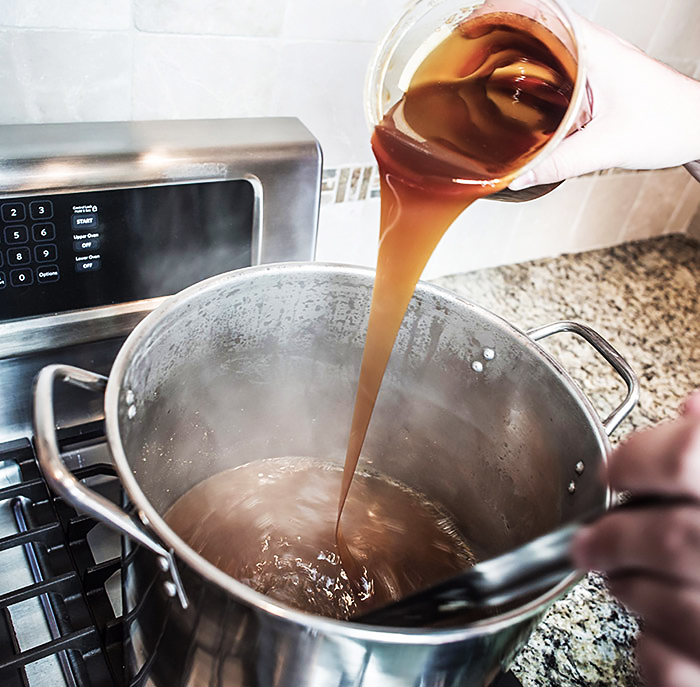
It’s also worth noting that brewing with malt extracts means the mashing has already been done for you so there is no need to adjust the mash pH, according to “Pale Ale” author Terry Foster, who holds a Ph.D. in organic chemistry.
Photo courtesy American Homebrewers Association
It’s also worth noting that brewing with malt extracts means the mashing has already been done for you so there is no need to adjust the mash pH, according to “Pale Ale” author Terry Foster, who holds a Ph.D. in organic chemistry.
Alkalinity aside, other substances brewers must consider are chlorine and chloramines. Found in many municipal supplies, chlorine and chloramines are not harmful but can react with phenols in malt and hops to create gross-smelling chemicals. Brewers can remove chlorine and chloramines with a potassium metabisulfite (Campden) tablet, or through different filtration methods. Homebrewers may let water sit overnight in an open container to allow the chlorine to evaporate.
There are a variety of ways to conduct a water analysis. Breweries concerned with consistency may pay a laboratory for a fairly in-depth report or use sophisticated equipment. Homebrewers can purchase a simple kit that allows them to test their own water or they can contact their local water utility for an analysis, though many homebrewers get by with only testing the pH of the mash.
Historical Water Profile Cities
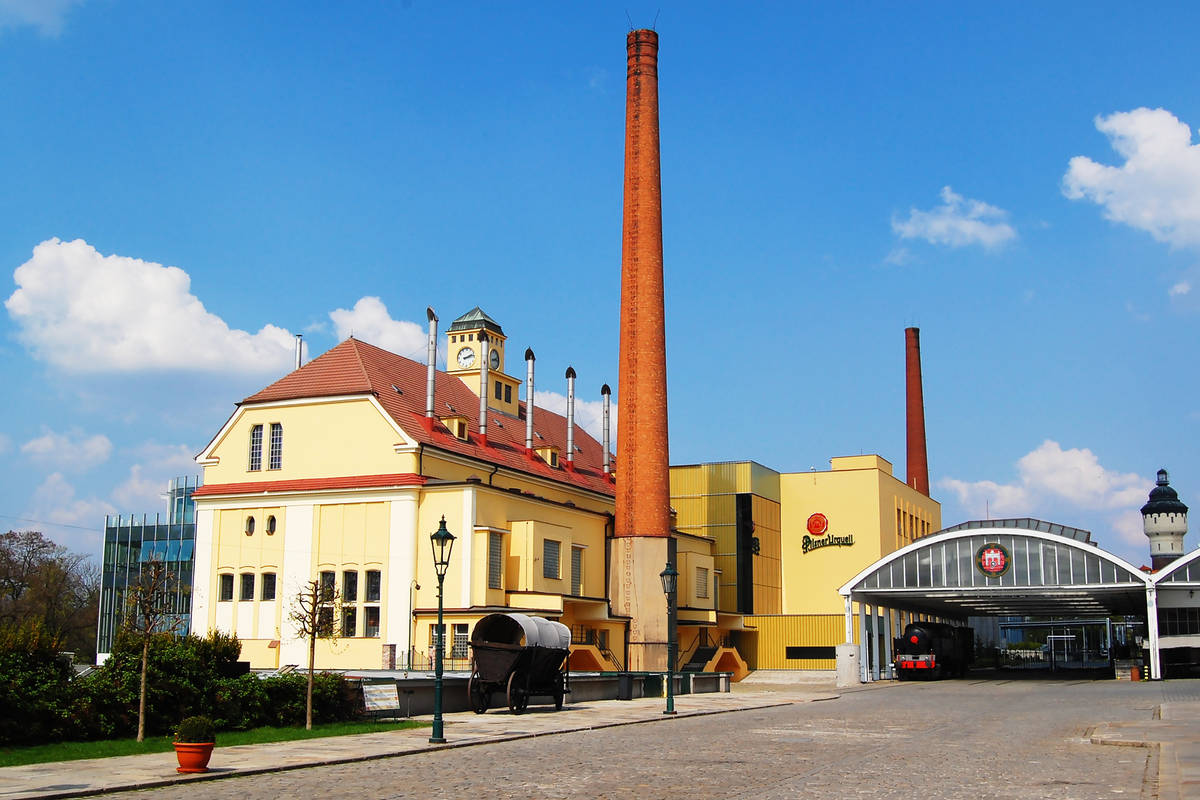
The Pilsner Urquell brewery in Pilsen, Czech Republic brews with water with very low alkalinity, meaning the beer is often described as having the soft, rich flavor of fresh bread.
Photo courtesy tadekk/Flickr
Eight European cities are associated with distinct water profiles that led to the rise of eight very different, beloved beer styles. That being said, despite not having a sophisticated understanding of chemistry, brewers throughout the centuries may have treated their water by adding salts, pre-boiling or other methods. They include:
Pilsen (Plzeň), Czech Republic – The water’s very low alkalinity favors light, base malts and calcium chloride salts may need be added to reach a lower pH. Pilsner is often described as having the soft, rich flavor of fresh bread. A lack of sulfate in the water allows for some mellow hop bitterness.
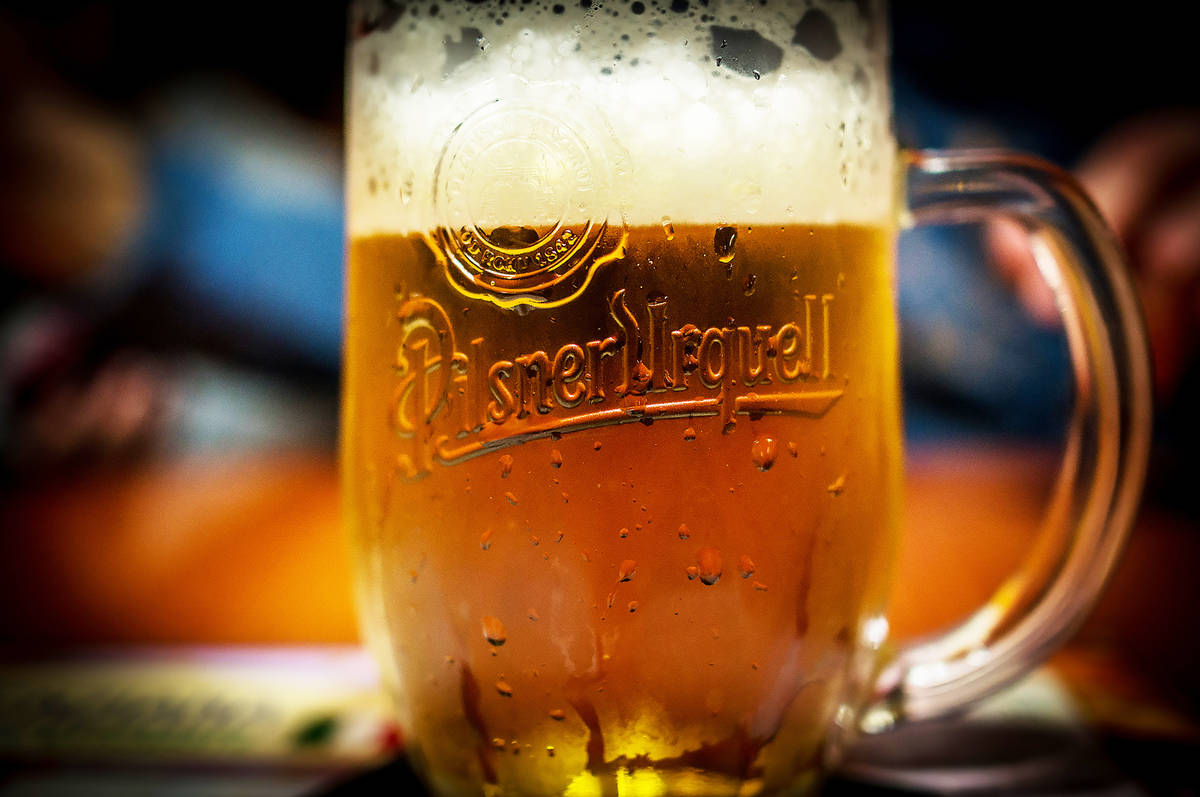
Historically, Pilsen had soft water that favored only light malts. A lack of sulfate also allows for some mellow hop bitterness.
Photo Courtesy Artur Borowski/Flickr
Dortmund, Germany – Also famous for pale lagers, Dortmund Export has a more assertive malt character than Pilsners because the water has a higher level of chloride that brings out the malt flavor.
Vienna, Austria – The mineral composition of Vienna’s water is similar to Dortmund, but with somewhat less calcium, sodium and chloride. These differences made copying Dortmund impossible, but when innovative brewers added some toasted malt to help balance the mash, it resulted in the famous red-amber Vienna Lagers.
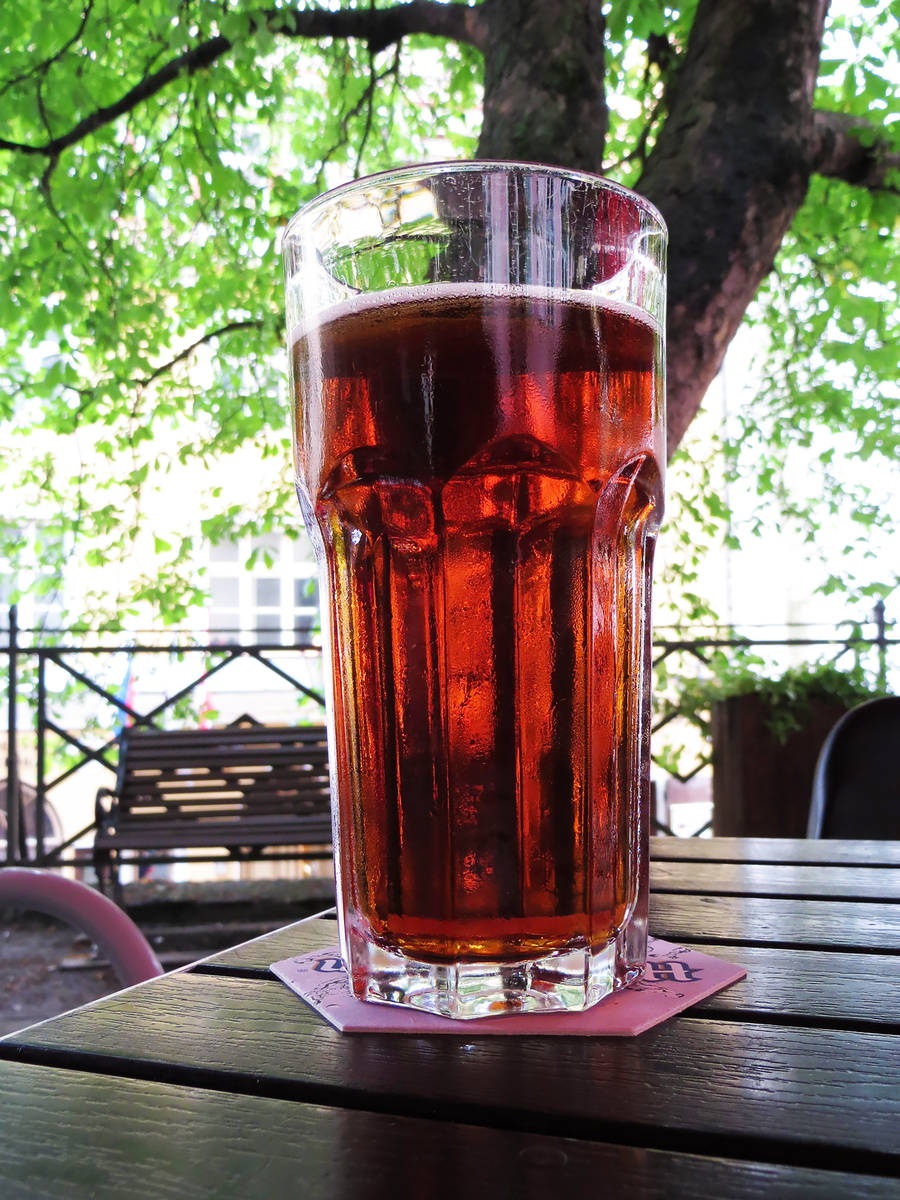
Photo courtesy Flickr/Bernt Rostad
Munich, Germany – With higher alkalinity (and a moderate amount of minerals), dark malts prevailed in Munich. “The smooth flavors of the Dunkels, Bocks and Oktoberfests of the region show the success of using dark malts to balance the carbonates and acidify the mash,” notes John J. Palmer in “How to Brew.” Similar to Pilsen, a lower amount of sulfate in the water allows for some subdued hop bitterness.
Permanent and temporary hardness are terms that crop up frequently in relation to brewing water, which are a function of the combination of ions. The important thing to know is that temporary hardness is easy to address – typically boiling will do the trick – and that the historical water profile cities known for darker beers were more likely to have temporary hardness in their water, while cities known for lighter styles had more permanent hardness.
London, England – Higher alkalinity caused London brewers to use more toasted and dark malts to balance the mash, resulting in the city’s famous Porters. However, a generally more balanced mineral content meant that a variety of styles was possible. For example, with some pre-boiling to lower alkalinity, Pale Ales also became popular.
Burton-on-Trent, England – The water in Burton-on-Trent had a much higher sulfate content than 111 miles south in London, so the city’s Pale Ales feature much more hop bitterness.
Edinburgh, Scotland – Similar to London but with higher alkalinity, brewers found that Edinburgh’s examples were ideal for heavier malts and less hops. The result? Sweet, malty Scottish Ales.

Photo courtesy rawdonfox/Flickr
Dublin, Ireland – With the highest alkalinity among the historical cities of the British Isles, a substantial amount of dark and roasted malts were needed to achieve the correct pH, leading to the darkest and, arguably, most assertively malty beer in the world. Low levels of sulfate and other minerals allow for just enough hop bitterness to balance the dark, roasted malts of Ireland’s Stouts.
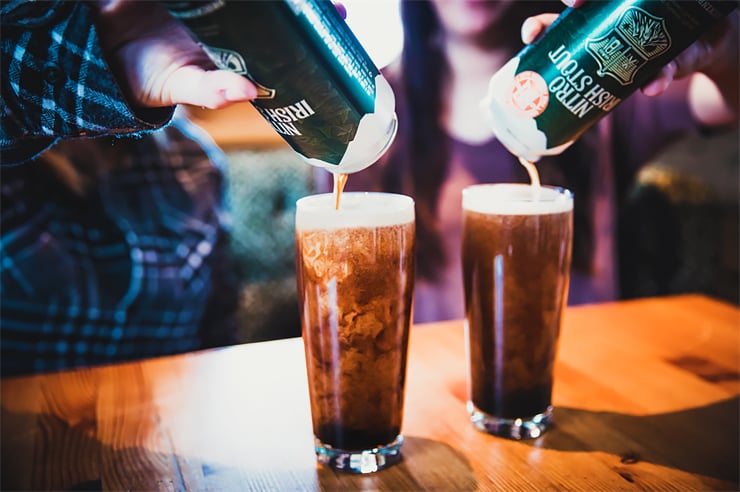
Photo courtesy Breckenridge Brewery
Other Notable Brewing Regions
Belgium – Belgium is a small country but the terrain varies, and different water profiles can be found in different cities. Historically, these differences allowed Belgium’s skillful brewers to craft beers in a range of colors – from pale Tripels to darker Belgian Strong Ales. Pierre Rajotte, the founder of Montreal’s first brew pub and the author of a guide to brewing Belgian Ales, says virtually any good-tasting water will work for brewing Belgian styles today. However, he prefers starting with softer examples since Belgian beers are lightly hopped and the sulfate found in harder examples tends to draw out harsh, salty notes from the hops.
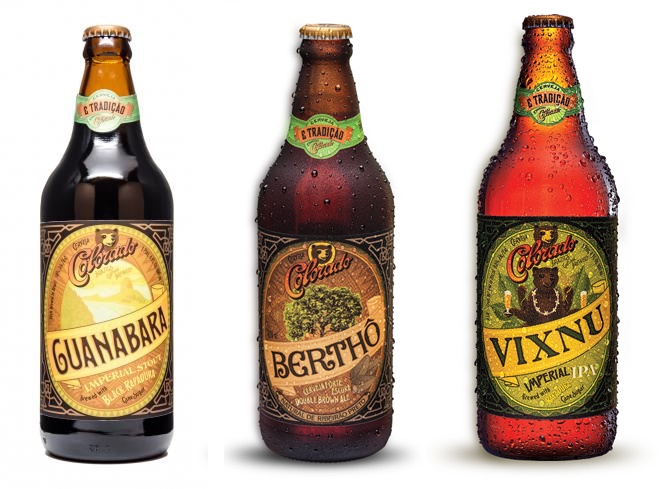
The founder of Brazilian brewery Cervejaria Colorado chose to include “Colorado” in its name because he felt Colorado represented the “quality of water, and the craft culture.”
Photo courtesy Cervejaria Colorado
Brazil – Brazilians have favored light lagers for some time, probably at least partly because of the hot weather, but the craft beer scene there is exploding. Brewers are crafting every known style and experimenting with traditional Brazilian ingredients. A key source is the Guarani Aquifer, which supplies breweries like Cervejaria Colorado. According to research published by the World Bank, “Natural groundwater quality in the [aquifer] is generally very good with low mineralization levels in most areas.” The lack of minerals and a relatively neutral pH mean that it is relatively easy for brewers to add what they need, though environmental issues and international politics may impact this critical source in the future.
United States – Data from the U.S. Geological Survey show that New England and the Pacific Northwest tend to have softer water, while the Mountain West and the Midwest have harder water (see map above). New England and the West Coast are both known for IPAs, which makes sense given the lower alkalinity. Remember that lighter malts work well with softer, less alkaline liquid.
While the differences between West Coast-Style IPAs and New England-Style IPAs didn’t necessarily arise from minor differences in water profiles, some of them do relate to chemistry. NEIPAs – hazy with a soft mouthfeel and flavorful, juicy hops – feature more chloride than sulfate, while the reverse is true for West Coast IPAs, which are clear and may feature shatteringly bitter hops. Sulfate brings out hop bitterness, and chloride helps accentuate the malt as well as contribute to a softer mouthfeel.
Consistency and Sustainability
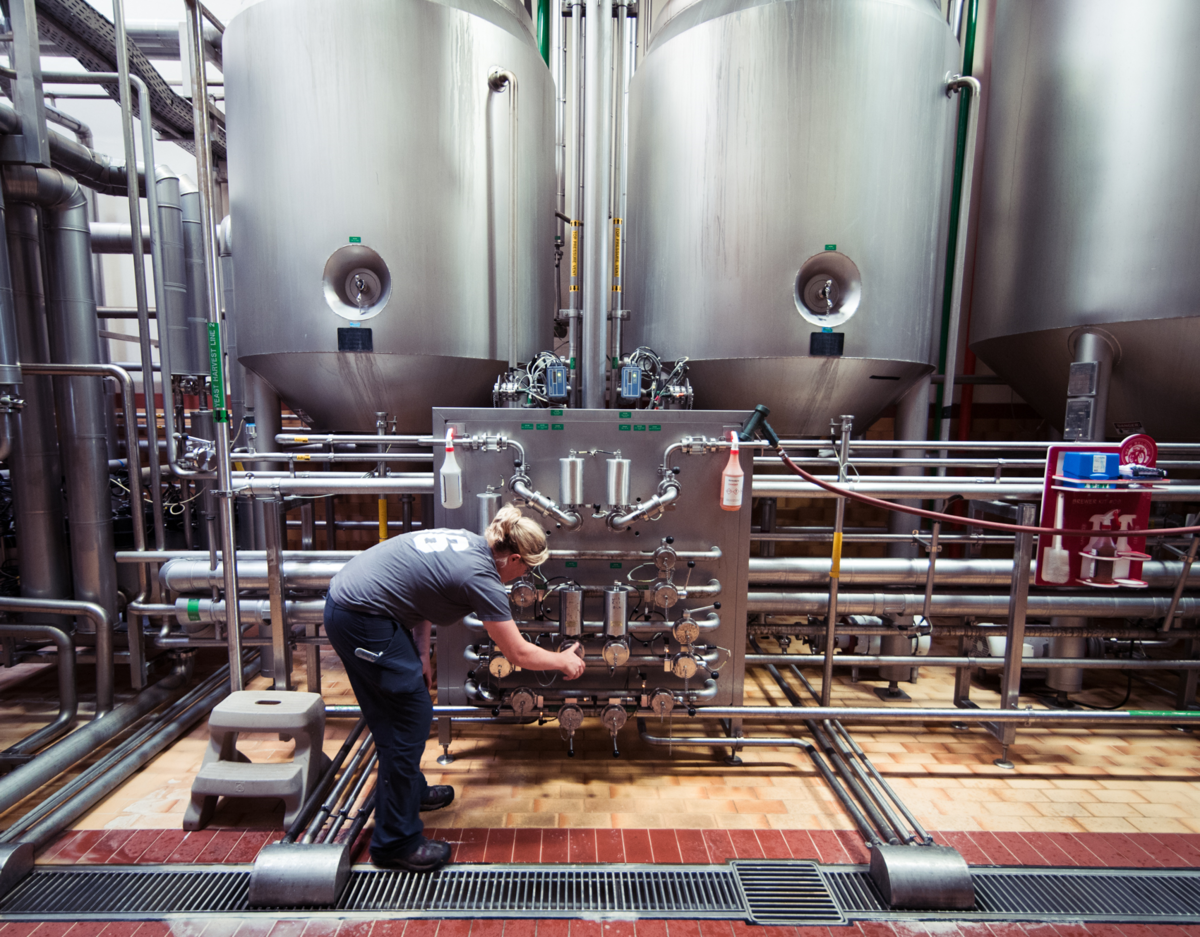
Brewer Kelly McKnight at work at New Belgium Brewing’s Ft. Collins facility.
Photo courtesy New Belgium Brewing Co.
For larger breweries that manufacture and distribute beer across the U.S. or internationally, consistency is critical. This is true whether you are Budweiser or New Belgium Brewing Co., which began in Ft. Collins, Colorado, in 1988 and opened a second brewing facility in Asheville, North Carolina, in 2016.
According to Jesse Claeys, a spokesperson for New Belgium, both breweries use city water. “The main difference is that in Fort Collins, the water is moderately hard, but in Asheville, it is soft,” said Claeys. The brewery routinely tests the liquid at both locations for mineral composition, and “will add salts and/or other treatments to ensure that the same beers brewed in Fort Collins and Asheville are consistent in their mineral content.”
Having access to an abundant supply – whether it’s straight from a spring or recycled – is a must for breweries of all sizes. Because of environmental concerns and shortages in some areas, sustainability and conservation are major considerations in brewing today.
Some breweries, such as Alchemist Beer in Stowe, Vermont, have installed sophisticated systems that help reduce wastewater. Full Sail Brewing Co. in Hood River, Oregon, is another. While Full Sail emphasizes the purity of their source water from the springs on Mt. Hood, the brewery also installed a voluntary water treatment plant that helps reduce the load on the local treatment plant and also provides local farmers with fertilizer.
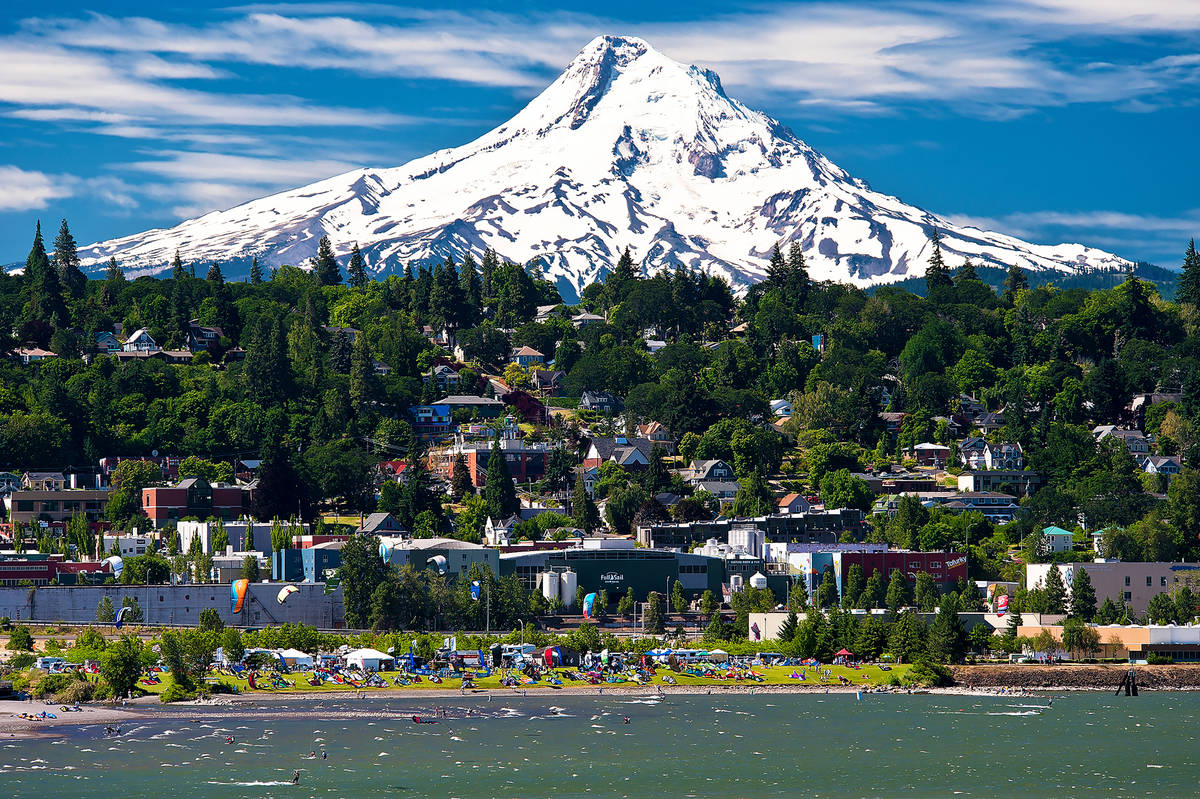
Full Sail Brewing, located on the Hood River, gets its brewing water from springs on Mt. Hood.
Photo courtesy Full Sail Brewing Co.
Full Sail Executive Brewmaster Jamie Emmerson says they are fortunate to have “fabulous brewing water in that it is very soft” – similar to that found in Pilsen, Czech Republic – “and then we can adjust sulfates or chlorides as we see fit to mimic other cities’ water.”
He noted that the city of Portland also has fairly soft water, and in Oregon the quality is generally high. The only treatment they have to do for brewing purposes is sterilization for safety, but no filtering is needed. And while sustainability is an important value for Full Sail, Emmerson said the practical side of breweries being efficient with their water is that it “does come back and help the bottom line.”
Recycled water is also a hot topic. Breweries in several states, including Stone Brewing in California, have partnered with municipal utilities to explore avenues for purifying and recycling wastewater. If consumers can get beyond the initial gross-out factor, “toilet-to-tap” examples may become the best brewing water in the world.
Distilling It All
Iceland’s Einstök Beer is made with glacier water, which the brewery claims is “the purest water on earth … the perfect foundation for brewing deliciously refreshing craft ales.” (The word “foundation” is key.) Similarly, Abita Brewing Co. in Louisiana touts a deep artesian well as a source that does not need treatment.
What does this mean? Are (allegedly) ultra-pure sources like these found around the globe really the best? The truth is that in the 21st century, the quality probably matters more for helping brand these breweries in a crowded market than it does for the quality of the beer. Sure, some water sources may not need any kind of treatment to remove contaminants (or substances like chlorine), and are relatively consistent over time – but they still require additions to replicate certain classic styles as described above. With all of these factors in mind, we’d argue that the best water for beer is the water filtered through your favorite brewery.

The annual #PureWaterBrew competition in Oregon demonstrates how purified wastewater can be used as a “blank canvas” – to be fine-tuned with minerals as needed – for brewing good beer.
Photo courtesy Clean Water Services



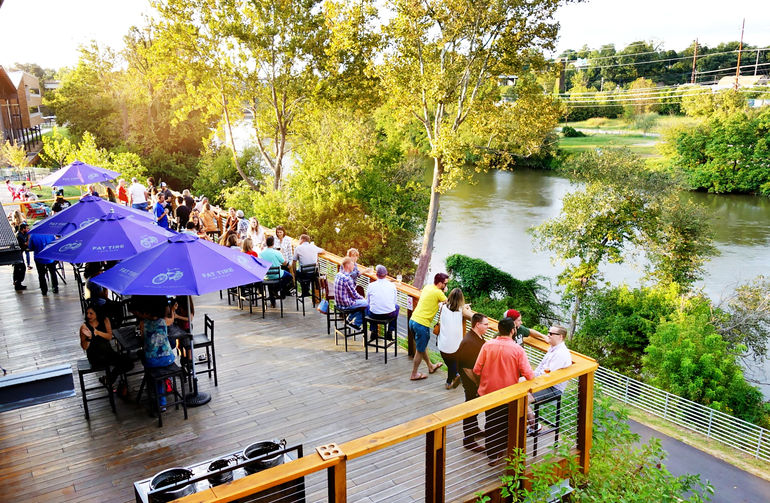
Comments